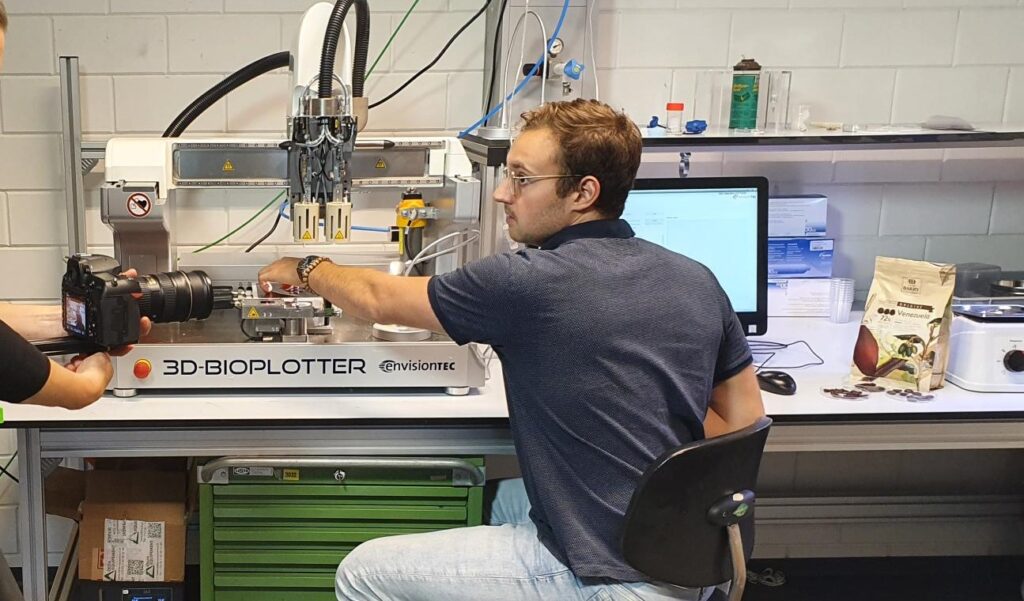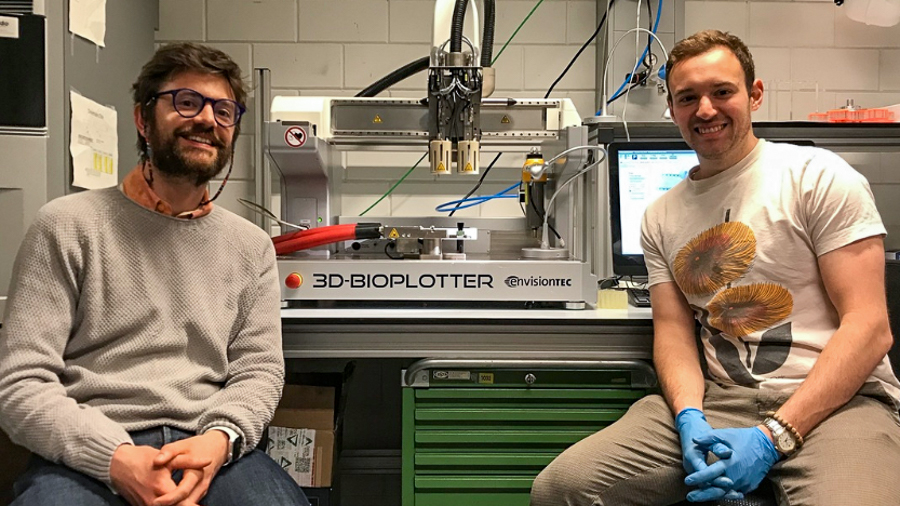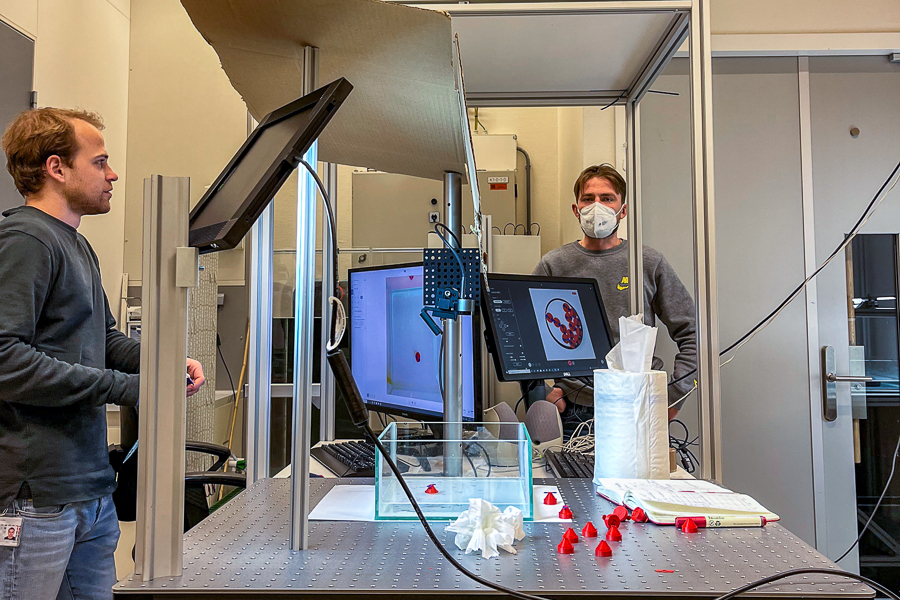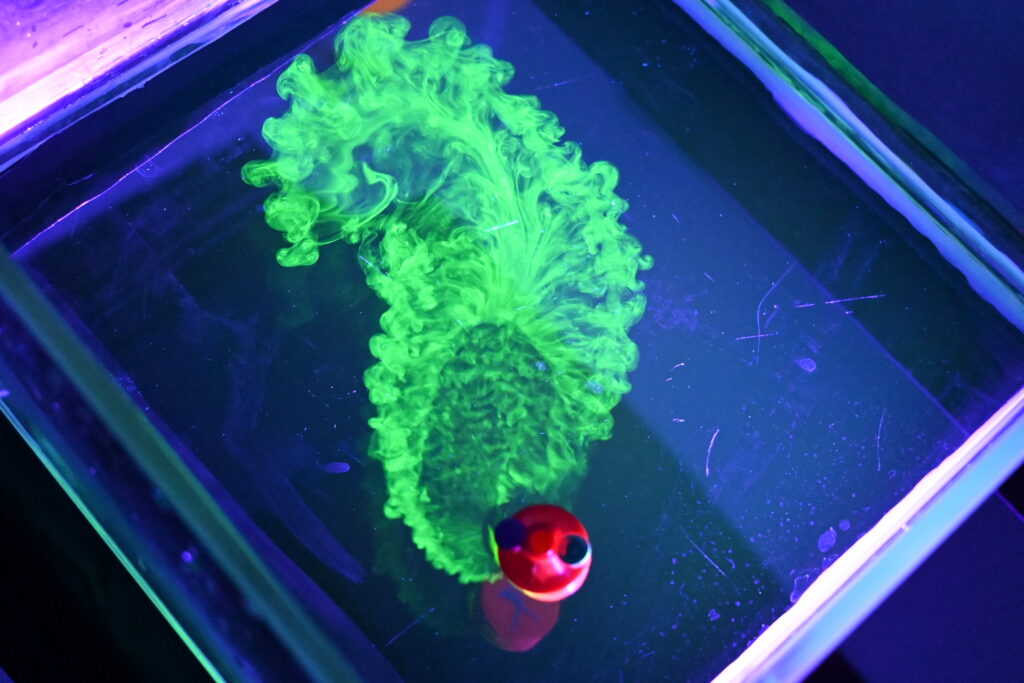
American engineering student Jackson Wilt wants to use 3D printing to bring highly engineered products and materials to more people. Wilt is pursuing a PhD in materials science and mechanical engineering at Harvard University, exploring how 3D printing can “embed materials with robotic properties that anyone can use.” Through Fulbright, he collaborated with teams at the University of Amsterdam (UvA) Soft Matter Group and AMOLF research institute in the Netherlands. In the UvA Fluid lab with Professor Maziyar Jalaal, he led a project to engineer robots that move through “bio-inspired propulsion” rather than relying on onboard motors. Wilt and his team’s advancements in printed, self-powered robots have applications in a wide range of fields, including manufacturing and food production.
Robotic motors can be costly and difficult to produce. Wilt and his team were inspired by water-dwelling rove beetles that can flee predators by secreting a substance called stenusine. This substance, like other substances with lower surface tension than water, induce a repulsive force called the “Marangoni effect” that moves objects across a liquid’s surface, whether a beetle on a pond or a little robotic boat. The robots also used another common force that can be observed in breakfast cereal, where the cereal pieces are attracted to each other, and clump together, due to the surface tension of the water molecules in milk.
Using a 3D printer, Wilt and his collaborators created robotbootjes (Dutch for “little robot boats”) with reservoirs that release liquids with low surface tensions; this induces the Marangoni effect. Wilt and his collaborators experimented with various alcohols, which have a lower surface tension than water, before settling on ethanol with a similar percentage found in vodka as the best natural propellant. Ethanol is also much more easily broken down in natural environments than petrochemicals. Wilt notes that “this approach works at smaller scales but sets the stage for small-scale robots using no electronics.” The researchers have published the results of this experiment, along with instructions for how to print the robot boats to make them accessible for classroom experiments.
The lab’s results from the ethanol-powered robots experiment have been featured in popular science news in the Boston Globe, Interesting Engineering, New Scientist and Ars Technica. Wilt and his team of engineers at the University of Amsterdam were also nominated for a science educational award from the Dutch educational television program Het Klokhuis. Wilt has been delighted that the project “captured people’s imagination.”
“International exchange of ideas and collaboration is one of the most important aspects of science,” Wilt observes. “Almost every scientific breakthrough builds on work conducted by established international institutions and studies from around the world.” He says it is crucial to train researchers wherever the best resources and experts can be found, and that future scientific leaders depend on opportunities such as Fulbright to bring their innovations back to the United States.

He also printed other robots that are actuated by hand, but little robots are not Wilt’s only project that has sparked the imaginations of adults, kids, and engineers alike. In collaboration with Delft University in the Netherlands and the company Unilever, which produces treats such as Magnum chocolate-covered ice cream bars, Wilt assisted his team at the University of Amsterdam to explore ways they can produce chocolate with a 3D printer to optimize its sound, crunch, and texture.
Wilt describes these experiments as fun, as well as important to both consumers and educators. He says they “delve into fundamental materials and fluid science to create innovative, affordable products with new functionalities.” Wilt adds that they “educate and engage individuals of all ages and backgrounds while providing a deeper understanding of scientific principles.”
Wilt’s Fulbright experience provided him with the independence to conduct research at the intersection of soft matter physics and 3D printing, and to collaborate with amazing mentors. “Reflecting on it all, I couldn’t be more grateful for the transformative impact my Fulbright experience has had on my life and career.”

